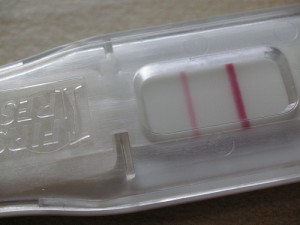Human Chorionic Gonadotropin (hCG) is produced during pregnancy, by the placenta. This is actually the hormone that pregnancy tests are designed to detect. The level of hCG is often relevant to the viability of a pregnancy. Following a miscarriage, the hCG is frequently tested to ensure that the miscarriage is complete and no further specialized care is required.
In nearly all healthy, viable pregnancies the amount of hCG present will double every two to three days following conception. An hCG reading of 25mIU/ml or higher is considered positive for pregnancy, but a reading of 5mIU/ml or less is considered negative. Once the hCG reading reaches between 1,000 and 2,000mIU/ml a gestational sac should be visible through a transvaginal ultrasound, another indication that a pregnancy is developing as planned.
At 25 to 40 weeks past a woman’s last menstrual period her hCG reading will typically register somewhere between 3,640 and 117,000 mIU/ml. Every woman’s reading may be slightly different, because the hormone develops in different concentrations in every woman. What matters is that the hormone has continued to develop or double at a normal rate.
In early pregnancy both extremely low and extremely high hCG readings can be cause for concern. However, most women will fall well within the average range and go on to have successful, healthy pregnancies. It is unusual for doctors to check hCG levels throughout pregnancy, as it is primarily used to detect pregnancy. However, individuals who are struggling with fertility or prone to certain conditions may undergo more in depth testing.
Visit the American Pregnancy Association to learn more about the role of hCG in human pregnancy.








Connect